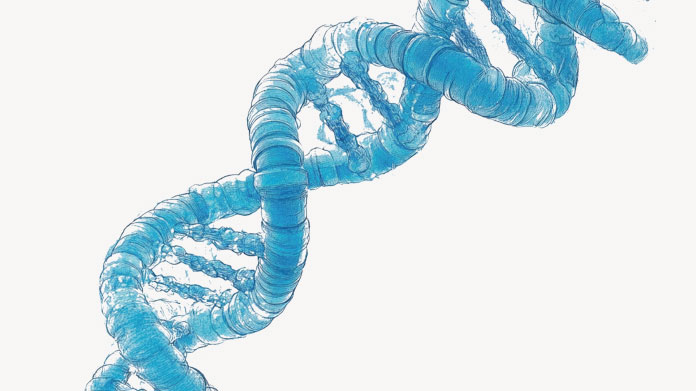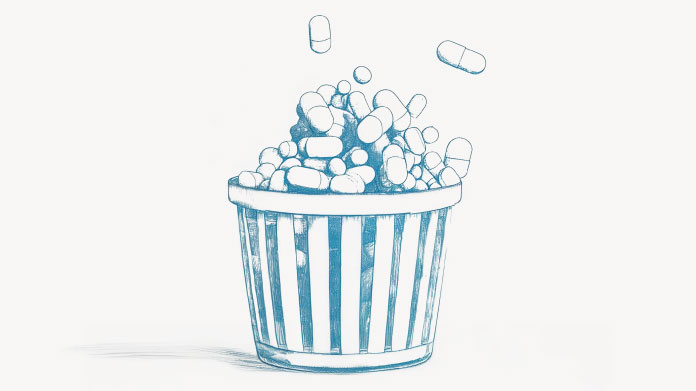Which foods have the highest content of spermidine?
Spermidine is a key substance in our cells, concentrations of which decline with age. Discover the 10 best foods for ensuring a good intake. Which food do you think tops the list?

What is spermidine?
Spermidine is part of the polyamine family. Involved in several vital functions in the body, this organic, endogenous compound was first identified in 1678 in, as its name suggests, human sperm. It is, however, found in all human cells (and in those of mammals in general). Spermidine is primarily a precursor of spermine, which ensures the stability and integrity of body fluids (1).
This famous fountain of youth unfortunately dries up with age but ensuring a regular, adequate intake from the diet can help to compensate for this decline (2-4).
The top 10 spermidine-rich foods to include on your menu regularly
10- Hazelnuts
Few oleaginous fruits contain substantial levels of spermidine, the one exception being hazelnuts, with a respectable 2.1 mg/100 g. A food to add welcome crunch and flavour to salads or satisfy an afternoon craving!
9- Cruciferous vegetables
Do you prefer cauliflower or broccoli? If you’re not a fan of either of these brassicas, bear in mind that their florets (or leaves) contain an average 2.5mg of spermidine per 100g (5).
Eat them raw or steamed to get maximum benefit from their vitamins, minerals and sulphur compounds.
8- Mangos
Clocking up 3mg of spermidine per 100g, mangos are also notable for their vitamin A content (in the form of beta-carotene, responsible for their orange colour) as well as polyphenols (including gallic acid, mainly in ripe fruit).
Combine them with bananas (0.86mg/100 g) to end your meal on an exotic note and at the same time boost your spermidine intake.
7- Beef
With 3.7mg spermidine per 100g, beef comes in at a creditable 7th place on our list. So does that mean eating a steak for lunch every day? Absolutely not. According to the French Agency for Food, Environmental and Occupational Health & Safety (ANSES), we should not exceed 500g of red meat a week.
And let’s also remember that grilled meat, particularly barbecued, generates toxic compounds (polycyclic aromatic hydrocarbons and heterocyclic amino acids) which accelerate cellular ageing.
6- Chicken liver
Raising your spermidine levels sometimes requires a little effort! Though perhaps not the most appetising, chicken liver is even better than steak, with a very decent 4.8 mg/100g (6) – not to mention its excellent vitamin A, B9, and iron content.
5- Peas
Halfway between a green vegetable and a pulse, peas are often combined with carrots in canned products. But did you know they are packed with spermidine (6.5mg/100 g)? (7).
Very useful for vegetarians or those who do not get on with offal!
4- Mushrooms
Vitamins B3 and D, selenium, potassium, phosphorus: nutrition-wise, mushrooms are already high performers. But to add to their ranking, they are one of the most spermidine-rich plant foods with an impressive 8.8mg/100 g (8).
3- Cheddar (and mature cheeses)
Like many mature cheeses (gouda, brie, parmesan, gorgonzola…), cheddar is chock-full of spermidine with a content nudging 20mg/100g.
But as with beef, that doesn’t mean you should eat huge amounts: restrict yourself to 30g-40g a day so that your salt and saturated fat intake remains moderate.
2- Soya beans
A staple of veggie cooking, soya beans - in the form of tofu, tempeh, miso or vegan milks - are one of the most popular and versatile sources of plant protein.
With a more than respectable 20.7mg/100g, they are second on the podium of the top 10 spermidine-rich foods (9).
1- Wheatgerm
And the spermidine gold medal goes to … wheatgerm! The part that both helps the wheat plant reproduce, and gets eliminated when grain is processed into flour (because the fatty acids it contains accelerate rancidity), wheatgerm reigns supreme with 24.3mg of spermidine per 100g. (10)
It’s usually sprinkled on vegetables, yogurt or cereal.
How to increase your spermidine intake easily
Besides choosing from these various foods every day, it can make sense to opt for a spermidine supplement as an easy and effective way of optimising your intake of this valuable nutrient (with its 100% vegan, gluten- and additive-free formulation, derived from rice extract, the supplement Spermidine provides 3mg of spermidine a day, the highest amount on the market) (11).
References
- Pegg AE. The function of spermine. IUBMB Life. 2014 Jan;66(1):8-18. doi: 10.1002/iub.1237. Epub 2014 Jan 6. PMID: 24395705.
- Soda K, Uemura T, Sanayama H, Igarashi K, Fukui T. Polyamine-Rich Diet Elevates Blood Spermine Levels and Inhibits Pro-Inflammatory Status: An Interventional Study. Med Sci (Basel). 2021 Mar 29;9(2):22. doi: 10.3390/medsci9020022. PMID: 33805535; PMCID: PMC8103277.
- Madeo F, Carmona-Gutierrez D, Kepp O, Kroemer G. Spermidine delays aging in humans. Aging (Albany NY). 2018;10(8):2209-2211. doi:10.18632/aging.101517
- Nishimura K, Shiina R, Kashiwagi K, Igarashi K. Decrease in polyamines with aging and their ingestion from food and drink. J Biochem. 2006 Jan;139(1):81-90. doi: 10.1093/jb/mvj003. PMID: 16428322.
- Sindhu RK, Cohen SS. Propylamine transferases in chinese cabbage leaves. Plant Physiol. 1984 Mar;74(3):645-9. doi: 10.1104/pp.74.3.645. PMID: 16663475; PMCID: PMC1066740.
- Krausová P, Kalač P, Křížek M, Pelikánová T. Content of biologically active polyamines in livers of cattle, pigs and chickens after animal slaughter. Meat Sci. 2006 Aug;73(4):640-4. doi: 10.1016/j.meatsci.2006.03.005. Epub 2006 Mar 18. PMID: 22062564.
- Zoumas-Morse C, Rock CL, Quintana EL, Neuhouser ML, Gerner EW, Meyskens FL Jr. Development of a polyamine database for assessing dietary intake. J Am Diet Assoc. 2007 Jun;107(6):1024-7. doi: 10.1016/j.jada.2007.03.012. PMID: 17524725; PMCID: PMC2848593.
- Muñoz-Esparza NC, Latorre-Moratalla ML, Comas-Basté O, Toro-Funes N, Veciana-Nogués MT, Vidal-Carou MC. Polyamines in Food. Front Nutr. 2019;6:108. Published 2019 Jul 11. doi:10.3389/fnut.2019.00108
- Wang LC. Polyamines in soybeans. Plant Physiol. 1972 Jul;50(1):152-6. doi: 10.1104/pp.50.1.152. PMID: 16658112; PMCID: PMC367332.
- Hirano R, Shirasawa H, Kurihara S. Health-Promoting Effects of Dietary Polyamines. Med Sci (Basel). 2021;9(1):8. Published 2021 Feb 5. doi:10.3390/medsci9010008
- Schwarz C, Stekovic S, Wirth M, et al. Safety and tolerability of spermidine supplementation in mice and older adults with subjective cognitive decline. Aging (Albany NY). 2018;10(1):19-33. doi:10.18632/aging.101354
Keywords
59 Days
Very happy with the order and the…
Very happy with the order and the prompt team's response to an identified issue with my order.
KUQI Fatmir
66 Days
15 + years as a customer
I have been using their products for over 15 years as I find both the quality and pricing excellent.
Del Chandler
68 Days
Good quick delivery
Good quick delivery
Timothy O Shea
69 Days
Good service
Good communication following order. Product came within the time frame and was well packaged. The only confusing thing I found was in checking out. For some reason it is not clear how to do so and the current system should be improved.
Joe O Leary
78 Days
Simple and fast.
Simple and fast.
Nina
78 Days
Great product was definitely what is…
Great product was definitely what is says and arrived on without issue
customer
85 Days
I love reading those product facts on…
I love reading those product facts on Supersmart.com. Effective health products making permanent changes to my blood-work results and testes. However, I also have to order capsules from other websites.
NORDGULEN Olav
87 Days
Great products
Great products Very easy to choose, to order… and to get at home
Federica mastrojanni
90 Days
Service rapide et bons produits
Service rapide et bons produits
customer
91 Days
Good products and fast delivery
Good products and fast delivery
Trusted
96 Days
Does what it says on the can
I believe in this product Made to highest standard The ordering process is straightforward Delivery time prompt Excellent product, excellent service Happy customer ❤️
Sheba Kelleher
101 Days
Excellents produits
Excellents produits. Rien à dire si ce n'est qu'ils sont très chèrs.
MJS_France
103 Days
Very good supplement
Very good supplement
Glaveash
104 Days
Supersmart supplements are really…effective
Supersmart supplements are really effective and have helped me and family members and friends to improve their health including some of us with severe health problems including some with no existing medical treatment.
Anne Georget
105 Days
SuperBig Supersmart
SuperBig Supersmart
Pierre



